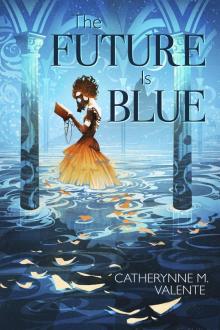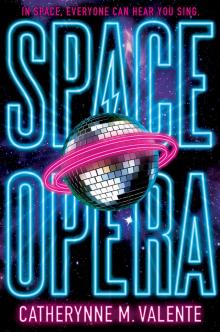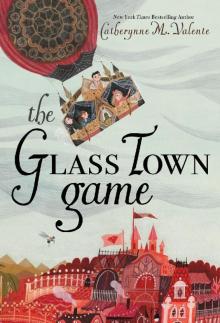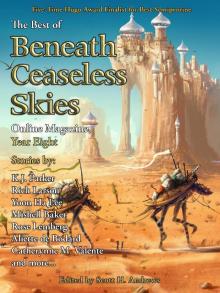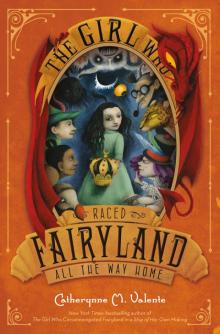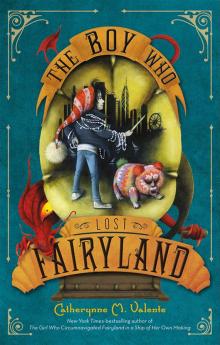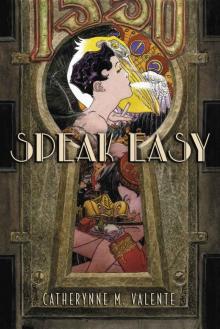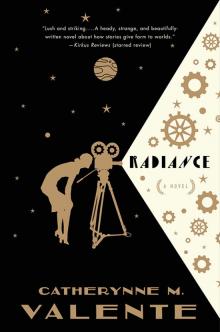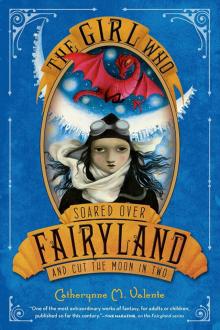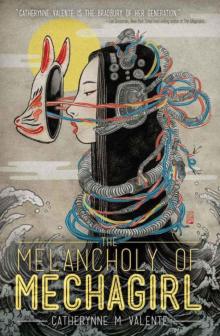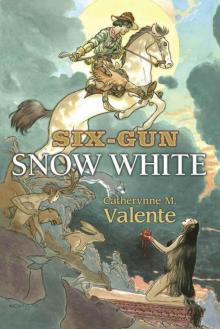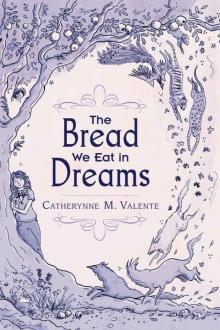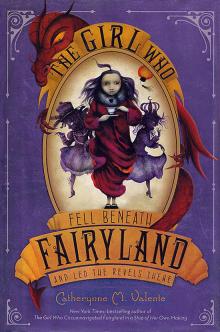


Wesley the Owl
Stacey O'Brien

Praise for Wesley the Owl
“The best of love stories between two intelligent beings, told (by the human) with good humor and remarkable insights into the mind of an owl—I couldn’t put it down.”
—Donald Kroodsma, Ph.D., professor emeritus at University of Massachusetts, Amherst, and author of The Singing Life of Birds
“Wesley will make you wonder if owls are not at least as wise as humans and as capable of compassion. Wesley the Owl will stretch your notions about the limits of interspecies communication and love. It will entertain, delight and, finally, cause you to weep. Guaranteed.”
—Sam Keen, author of Sightings: Extraordinary Encounters with Ordinary Birds
“Stacey O’Brien tells the intriguing story of how her life was changed and rearranged when she attempted to tame and raise Wesley—a barn owl. She shows us how she was ultimately repaid with his love and devotion, and given glimpses into the mind of an animal that has an unexpected ability to understand human language and to communicate. Fascinating!”
—Stanley Coren, psychologist and author of How Dogs Think and Why Does My Dog Act That Way?
“From wingtip to wingtip, Wesley the Owl will open your heart to feathered wisdom. And you will learn some astonishing facts about birds and other creatures from a compassionate scientist dedicated to saving lives.”
—Don Höglund, DVM, author of Nobody’s Horses
“With an eye for detail not often seen in books about animals Stacey O’Brien tells her fascinating story with great passion. This wonderful, enchanting book makes one understand that the bond we have with animals goes beyond the ‘norm’ of dogs and cats and can cross over to all of nature. Wesley the Owl is a true testament that love comes in many shapes, sizes, fur and feathers.”
—Randy Grim, author of Miracle Dog, subject of The Man Who Talks to Dogs
“Stacey O’Brien’s relationship with an unreleaseable Barn Owl spanned almost two decades, and she tells their story of mutual devotion with an irresistible combination of empathy, humor and keen observation. Wesley the Owl captivated me from the first page…it is a beautiful, inspiring book.”
—Suzie Gilbert, Wildlife Rehabilitator and author of Hawk Hill
Photo by Stacey O’Brien
A Division of Simon and Schuster, Inc.
1230 Avenue of the Americas
New York, NY 10020
Copyright © 2008 by Stacey O’Brien
Photographs on Chapter 4 and Chapter 8
copyright © 2008 by Wendy Francisco
All rights reserved, including the right to reproduce this book or portions thereof in any form whatsoever. For information address Free Press Subsidiary Rights Department, 1230 Avenue of the Americas, New York, NY 10020
FREE PRESS and colophon are trademarks of Simon & Schuster, Inc.
Library of Congress Cataloging-in-Publication Data
O’Brien, Stacey.
Wesley the owl: the remarkable love story of an owl and his girl / Stacey O’Brien.—1st ed.
p. cm.
1. Barn owl—California, Southern—Anecdotes. 2. Barn owl—
Behavior—California, Southern—Anecdotes. 3. Human-animal relationships—California, Southern—Anecdotes. 4. O’Brien, Stacey.
5. Women biologists—California, Southern—Biography. I.
Title.
QL696 .S85027 2008598.9'7—dc22 2008007985
ISBN-13: 978-1-4165-7981-6
ISBN-10: 1-4165-7981-8
Visit us on the World Wide Web:
http://www.SimonSays.com
Dedicated to my parents,
Ann Baker Farris and Haskell Glenn O’Brien,
who gave me wings to fly
and
In loving memory of my grandmother
Agnes “Zimmie” O’Brien,
who rescued, raised, and loved a barn owl
long before I was born
Author’s Note
IN THE INTEREST of brevity, I have not listed every place that Wesley and I lived over a nineteen-year period, nor every roommate we had. I moved several times over the course of this memoir, but it would not serve the reader to have to wade through all of that. Also, I have changed a few names of those portrayed.
Since this story took place, federal laws protecting wild birds have become more stringent. It is against the law to keep any wild bird or indigenous wildlife without a permit. If you find a baby bird on the ground, try putting it back in its nest. Then watch to see if the parents return within an hour. Parents will not reject a baby bird that’s been touched by a human or animal. Birds cannot smell the way mammals can. If you can’t replace the bird in its nest, take it to an animal rescue center; workers there will know of a certified wildlife rehabilitator who can take care of it.
There is much urgent work still to be done to protect animals from abuse, exploitation, and destruction of their environment. I recommend joining an organization such as Defenders of Wildlife, The Jane Goodall Institute, the Audubon Society, the ASPCA, and other such groups to help in the battle to protect our fellow citizens of the earth. It is also extremely rewarding to volunteer at your local wildlife rescue and rehabilitation center, which is always looking for—and happy to train—willing helpers.
Contents
1 The Way of the Owl
2 To That Which You Tame, You Owe Your Life
3 Owl Infancy
4 Barn Owl Toddler: Love Me, Love My Owl
5 Flying Lessons
6 Attack Kitten on Wings
7 Love to Eat Them Mousies
8 Understanding Each Other: Sound and Body Language
9 Dr. Jekyll and Mr. Hyde
10 A Day in the Life of a Biologist
11 Owls Are Not Waterbirds
12 Deep Bonds
13 The Sex Tapes
14 Fifteen Years of Trust
15 Twilight: He Whom I Tamed Saves My Life
16 The End
17 After
Acknowledgments
1
The Way of the Owl
ON A RAINY Valentine’s Day morning in 1985, I fell in love with a four-day-old barn owl. I’d been working at Caltech (California Institute of Technology) for about a year when one of the scientists called me into his office. He mentioned that there was an owl with an injured wing, and said, “Stacey, he needs a permanent home.”
The little owl was so tiny and helpless he couldn’t even lift his head or keep himself warm. His eyes weren’t open yet, and except for a tuft of white down feathers on his head and three rows of fluff along his back, his body was pink and naked. I was smitten beyond reason by his hopelessly goofy appearance. He was the most wonderful creature I’d ever seen, gorgeous in his helplessness. And, oh, was he uncoordinated. His long, lanky legs stuck out awkwardly, and his oversized talons erratically scratched anyone who held him. His scrawny body had two little nubs that would eventually become wings, and his ungainly pterodactyl-like head wobbled from side to side. It seemed as if he had been assembled from the flotsam and jetsam of many different creatures.
Wesley at four or five days old. Stacey O’Brien
Under normal circumstances, a rehabilitation center would have raised him using owl puppets to feed him and teach him to live in the wild, which is how biologists have raised endangered birds like sandhill cranes and the California condor that they intend to release. But this baby had nerve damage in one wing, so although he might one day be able to fly well enough to hunt sporadically, his wing could never build up to the level of endurance he would need to survive in the wild.
Like all barn owls, the baby smelled like maple syrup but not as sweet, something closer to butterscotch and comfy pillow all in one. Many biologists at Caltech, where I both worked and took classes, would bury t
heir faces in their owls’ necks to breathe in their delicate, sweet scent. It was intoxicating.
Scientists from all over the world were on our barn owl research team. There are seventeen species in the barn owl family and they live on every continent except Antarctica, but the ones we worked with were all Tyto alba, the only species that lives in North America. Found from British Columbia across North America through the northeastern and southern United States, as well as in parts of South America and the Old World, barn owls are raven-sized birds, about 18 inches from head to tail. They weigh only about one pound full grown, but their wingspan is magnificent—averaging three feet, eight inches—almost four feet across. And barn owls are strikingly beautiful; their feathers are largely golden and white and their faces a startling white heart shape.
As gorgeous as they are, it is the owls’ personalities that invariably capture the hearts of the people who work with them. All of the Caltech scientists grew intimately attached to their birds. One big, strapping scientist worked with an owl that got loose, flew into the ventilation system of the building, and there somehow hurt his foot. Owls are very sensitive and easily stressed. Even though the injury was minor and the owl was taken care of right away and not in any pain, he just turned his head to the side and wouldn’t look at anyone or eat. Within a day, the owl died. The incident had so upset him that he turned his head away from life, and there was nothing any of us could do to coax him back. After he died, the big tough scientist sobbed and cradled the owl’s body in his arms. Then he took a short leave of absence. That’s how much the owls would work their way into our hearts.
This tragic behavior wasn’t unusual for owls, who are emotionally delicate, even in the wild. For example, owls mate for life, and when an owl’s mate dies, he doesn’t necessarily go out and find another partner. Instead, he might turn his head to face the tree on which he’s sitting and stare fixedly in a deep depression until he dies. Such profound grief is indicative of how passionately owls can feel and how devoted they are to their mates.
This is the Way of the Owl.
I LEARNED MY own passionate love of animals from my dad, who worked at Jet Propulsion Laboratories (JPL), one of Caltech’s labs, for as long as I can remember. He would take my sister, Gloria, and me on many adventures to the ocean and into the Angeles Crest National Forest, which bordered our house. He taught us to observe animals without disturbing them, and every encounter was like a breathtaking meeting with an intelligent life form from another world, so different yet so familiar. I realized that each creature had its own personality. It was as rewarding for me to win an animal’s trust as it would be for a space scientist to converse with an alien.
I learned to lure octopi out of their secret places by holding my hand very still, near shallow ocean rocks where they would hide. Because they are so curious, they’d eventually slide their tentacles toward me, gingerly explore my hands, then they’d gain confidence and end up crawling all over me. Gloria and I always tried to save baby birds we found, and we’d intervene to rescue lizards from cats. Once when I was four, my mother absentmindedly flicked a spider off a wall and flushed it down the toilet. I screamed and then cried for the rest of the day, because to me the spider was an innocent being who had hurt no one, and her life had been destroyed for no reason. My mother was flabbergasted by my extreme reaction and tried to reason with me, but even today I agonize about how casually our fellow creatures can be killed.
I also had an affinity for a more familiar, “traditional” animal. My first close bond, aside from my parents, was with our dog, Ludwig—half collie, half German shepherd. Luddie guarded my crib, lying under it while I slept and padding out to get my mother when I woke up. He always watched over me as I started to crawl and, when I began to learn to walk, would let me grab his tummy hair to pull myself up. I’d put my arms over his back, holding on to his fur, and he would walk very slowly and carefully with me. Whenever I started to fall, he went down, too, to cushion my landing. He taught me to walk, and I can still remember his soft, patient brown eyes looking back at me as we toddled along. I think Luddie’s companionship lay the groundwork for my other relationships with animals, and I’m grateful that my mother had the wisdom to teach me to love and trust Luddie.
In addition to my love of furry, many-legged, complex animals, when I was a kid my bedroom was also filled with “experiments”—things in jars and vats of stagnant water full of exotic life forms that I could examine under my microscope. I once had two hundred silkworms in my room, which then hatched into two hundred mating moths that I would have to brush out of my bed at night before retiring. As a child I definitely had to clean my own room—and was instructed to use disinfectant. No one else would venture in there.
As I grew older, my father began taking my sister Gloria and me to lectures at Caltech, where I first saw my childhood hero, Jane Goodall. I was so convinced that I would grow up to do exactly what she did in Africa that I insisted on Swahili lessons. The next time she lectured at Caltech, I met her and tried out my newly learned language. I wonder if she remembers a little girl in blond braids who spoke Swahili.
Gloria and I were child actors who sang professionally in Hollywood recording studios into our twenties. We started singing onstage with our family band when I was five and she was three, and because we could sight-sing (read music and sing it without needing someone to teach it to us), a year later were doing TV commercials, movie scores, and singing background on albums. You probably heard us through the 1970s in campaigns for McDonald’s and Pizza Hut, Little Friskies, ice creams, Bekins Moving and Storage, California Raisins, and more than a hundred other commercials. Gloria and I also sang backup for Glen Campbell, Barry Manilow, Helen Reddy, the Carpenters, and John Denver, among others, as well as in the second and fourth Rocky movies, The Exorcist II: The Heretic, and a bunch of Disney movies. Music definitely runs in our family. My grandfather was a drummer in the big-band era, and my dad’s brother is Cubby O’Brien of the original Mouseketeers. Even so, because of my fascination with science and love for animals, it was more natural that I would go on to earn a degree in biology, which I did in 1985, at Occidental College—a sister school to Caltech, which had very few women at that time. Students at Occidental could enroll in any Caltech classes, and vice versa, which enabled both schools to broaden their curricula. I preferred the atmosphere at Caltech, though, so I took classes there, which also led to an undergrad, part-time job working with primates at their Institute of Behavioral Biology.
Eventually, I was offered another position in a department that studied owls. After monkeys, who were practically human, I was afraid that working with owls might be boring. Back then I ignorantly thought, as many people do, that they were “just birds.” They seemed aloof, and I knew little about them beyond the fact that they flew around at night. How interesting could that be? The only owls I had ever been around were in my grandmother’s massive owl figurine collection, and I figured real owls were probably not too different. But the owl job was full-time and I really needed the money. Plus it offered opportunity to participate in research. It was a plum position for a young biologist because I could learn so much from those around me.
I accepted the owl job, and within six months grew to love these emotional, sassy little creatures as much as did the distinguished scientists who had been working with them for years.
“STACEY,” said Dr. Ronan Penfield, one of the scientists, “the zoos and other institutions are overwhelmed with owls that can’t go back to the wild, and this owlet needs placement. Taking him home would be a perfect opportunity for you to do a long-term, deeper study of an owl on a level that’s just not possible in a purely academic setting.”
“You mean I should adopt him?”
“That’s exactly what I mean. Since his eyes are still closed, he will imprint on you if you take him right away, and you could make observations, record his sounds and behaviors…”
I was both thrilled and terrified by this opp
ortunity—scared by the enormous responsibility I would assume for this young life. I stared at Dr. Penfield to see if he was serious.
“…you may discover some things up close that we have not observed from a distance. I think this would be a beneficial study for our overall understanding of barn owls. You could keep us informed of your findings all along.”
In spite of my fears, I wanted to leap across the desk, grab him by the shoulders, and shout, “Yes, I’ll do it!” Instead I took a deep breath and tried to sound professional.
“I’ll need to make some arrangements, but I would love to take him.”
I was about to live with and raise one of the most beautiful animals on earth. Barn owls are quite different from all other owls. They are in a completely separate family called Tytonidae, while all other owls of the world are in the family Strigidae, meaning “typical owls.” I was fascinated by all owls, but to have the chance to get to know the only representative of the nontypical owls that exist on the North American continent was very exciting.
The first bird, Archaeopteryx, began to appear in the fossil record during the Upper Jurassic period, around 155–150 million years ago. It had some dinosaur-like characteristics but was still clearly a bird. From then on, birds diverged, and owls would appear much later. My owlet was a bit of living history.
It’s estimated that barn owls first started to appear in the fossil record during the Paleocene age (57.8–65 million years ago). The modern barn owl, Tyto, appeared around the middle of the Miocene period (5.3–23.7 million years ago) and diversified into various species during the Pliocene (1.6–5.3 million years ago) and Pleistocene (0.01–1.6 million years ago) periods. Wesley’s species, Tyto alba, started showing up in the fossil record during the Pleistocene. Although owls are sometimes included in discussions of raptors, the truth is they are thought to be more closely related to nightjars than to diurnal (daytime) birds of prey (Falconiformes). Nightjars, which include whippoorwills, actually look like some kind of missing link between a regular bird and an owl.

